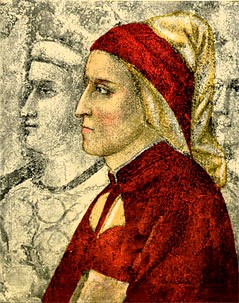It was a chilly early September morning in Paris, as if fall arrived overnight. It seemed fitting somehow since it was our last day in France and we had just been spoiled by ten days of Provençal heat. Nevertheless, we were going to make the best out of it because we were going on an adventure. My family, our guide—we’ll call him Henri—and I packed into a small, white Clio. Destination: Normandy.
But first, we would actually have to move. Because although it felt like most of the city was still asleep, we managed to get stuck behind a lone, lethargic garbage truck. With nowhere to go on our hotel's tiny, one-way street, we were at the mercy of the French bureaucracy.
Eventually, after mustering up some patience (because it's not like you're going to convince the garbage truck to move any faster) and inching our way down the street, we finally parted ways with the truck.
Henri was off like a shot. He sped through the streets of Paris, slowing down only to point out some significant sites and architecture while rattling off the everything he knew about them. This would become one of the themes of the day: Speeding to incredible sites and taking in mountains of information. It’s not my preferred slow-travel way of doing things, but I’ll tell you right now that it was a remarkable, once-in-a-lifetime experience.
I am not much of a morning person, so I can’t really remember what he showed us in Paris. The next thing I do remember, however, is flying up the highway. At one point, my dad asked Henri to slow down. He scoffed and told my dad the it was safer to go faster so he could get away from the cars around and in front of us. Other drivers, you see, are the real dangers. And that was the end of that discussion.
After about 3 hours of driving and an obligatory coffee/croissant stop, we finally reached our first destination: Bayeux.

Bayeux is mainly known for its massive cathedral and the Bayeux Tapestry.
At first, we were reluctant to stop here because we wanted to make sure we would have plenty of time for the D-Day beaches. But Henri insisted and he was right. This would be another theme of the trip: Henri insisting (and being right).
The town was the first to be liberated. Incredibly, despite being very close to the D-Day beaches, it escaped a lot of damage during the war and its medieval historic center is very well-preserved. It’s one of those places that feel a bit like a historical “Where’s Waldo” game with interesting details waiting to be discovered in plain sight.

The Cathédrale Notre-Dame de Bayeux lies at the center of town. Since we had not expected to come here, none of us did any research or knew what to expect. I think we were all stunned by how beautiful and dominating the cathedral is in person.

Bishop Odo of Conteville consecrated the cathedral on the 14th of July in 1077. The Bishop’s brother, William the Conqueror, Duke of Normandy and King of England attended the consecration. Since additions and changes continued until 15th century, it is a mixture of Norman-Romanesque and Gothic architecture.


We did not have enough time to go inside, but the entrance is free. There is also an English guided tour 5 times each day for €4. It looks like this is currently only be available between July 1 and August 31 2011, so be sure to double-check the website if you are hoping to go.
As I was looking for more information about the interior, I found this beautiful story from a member of the British Royal Navy. If you have some time, give it a quick read. He describes a touching encounter with a young French boy in the cathedral just one week after the liberation.
The cathedral was also the original home of the Bayeux Tapestry, which was our main reason for coming to Bayeux and our next stop.
The Bayeux Tapestry is actually an embroidery of wool onto linen that depicts the Norman invasion of England and the Battle of Hastings in 1066. It is housed at the Musée de la Tapisserie de Bayeux, which used to be the bishop’s palace.

There is some controversy over who actually commissioned and made it. People once believed it to be the work of William's wife, Queen Mathilde and her ladies-in-waiting, giving it the often-used name of La Tapisserie de la Reine Mathilde (Queen Mathilde's Tapestry). Historians also suggest, however, that Bishop Odo commissioned the work for his new cathedral in Bayeux and that artisans created it in England.
The tapestry itself measures 70 meters or 230 feet long and is in a dimly lit, elongated U-shaped room. You get an audio guide upon entering the room so you can follow the story around the U, panel by panel.
I was really surprised by how beautiful the workmanship is and how well it relays the story. It's kind of like a medieval comic book.
Before we got inside, Henri told us, “This is the story of how your modern language was born.”
It was an interesting concept to think about as we walked along slowly, seeing the characters and story unfold.
How languages develop is obviously an incredibly complex process, but the Norman conquest brought a new dialect, Anglo-Norman, to the ruling class of England. This new dialect spurred the language's evolution from Old to Middle English.
Here's an example of how remarkable the shift was. Listen to Lord's Prayer in Old English and, then, Middle English in the video below. Only a few words sound familiar in the Old English version, but it's pretty easy to follow the Middle English one.
The tapestry has another interesting language connection. As I mentioned before, it hung in Bayeux's cathedral where people from all walks of life could come and learn the story William the Conqueror's victory. Since not everyone could read the Latin captions, the embroidery served as an effective illustration of the events that led to the conquest. It was a great piece of propaganda that solidified William as a rightful ruler.
We did not get any pictures of the tapestry, but there are a ton of resources online. I would, however, highly recommend seeing it in person if you happen to be in the area at some point. In the meantime, however, here’s a great video:
I will also add some related links at the end of the post if you’re interested in getting lost in history for a while.
After seeing the tapestry we walked through the rest of the museum, which has a nice collection of artifacts and information that helps provide historical context for the tapestry.
We all enjoyed the museum and I think we would have liked to spend a little more time wandering Bayeux. Unfortunately, we were on a tight schedule. Next stop? Omaha Beach.
Further Reading:
- A French site with each panel (requires Quicktime)
- One from the Museum of Reading, which houses the Victorian replica
- Another site with pictures and translations of each panel
- More history on the English language
- Scholarly paper on the Bayeux Tapestry and the Vikings. Also has some close-ups of the tapestry.


